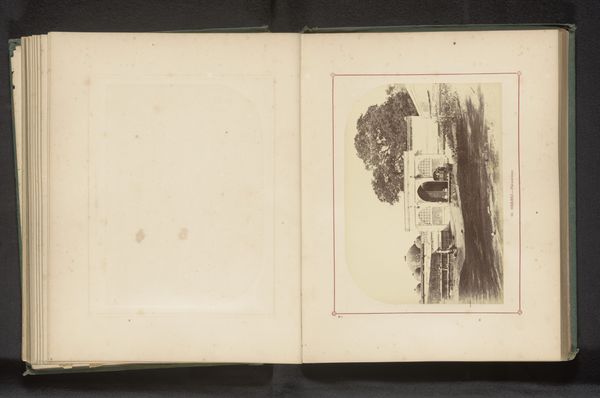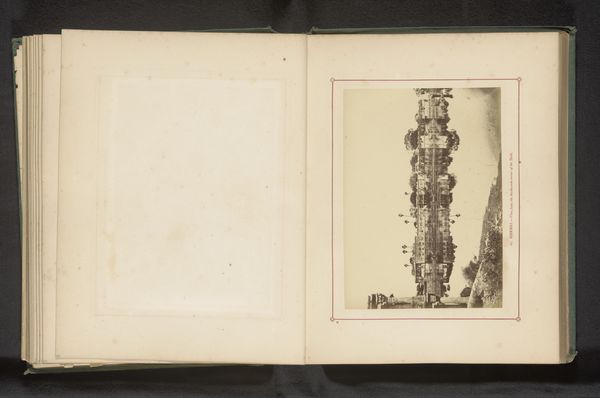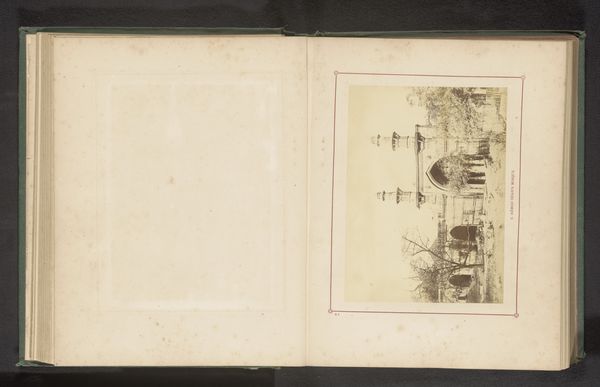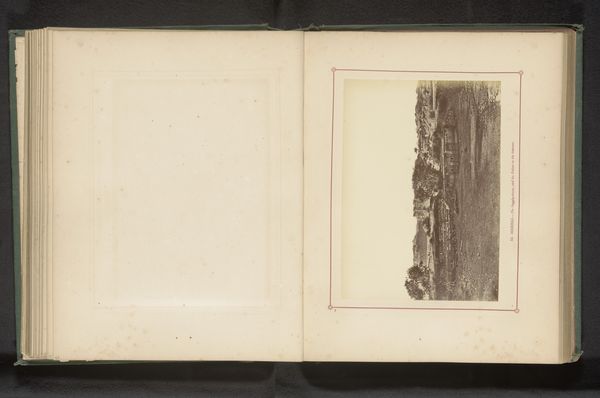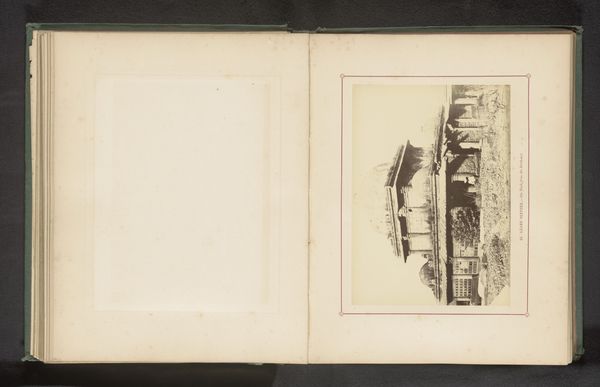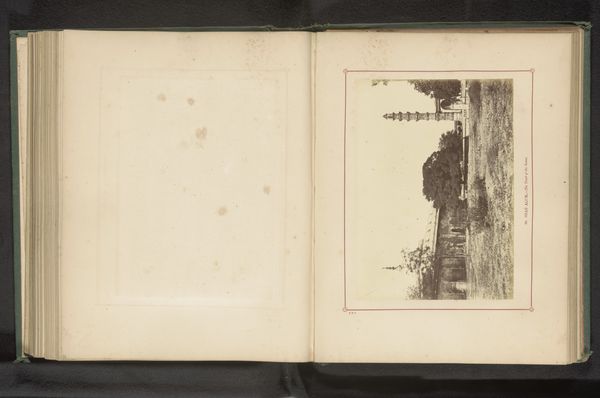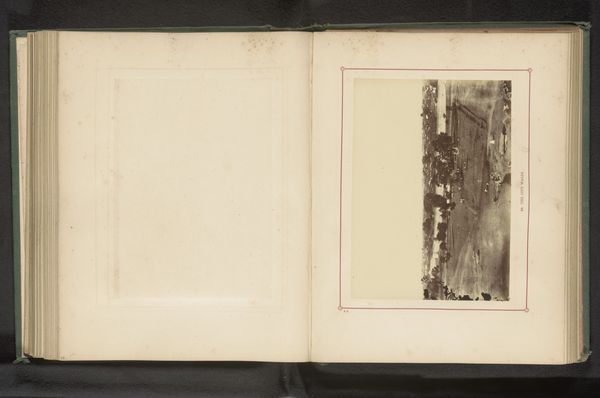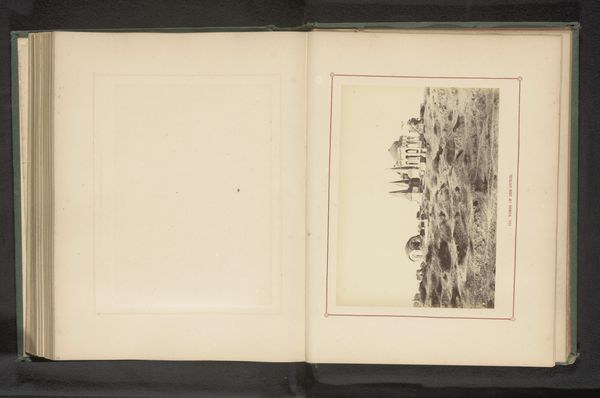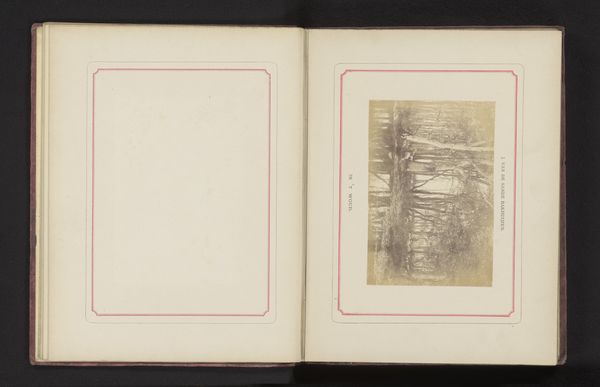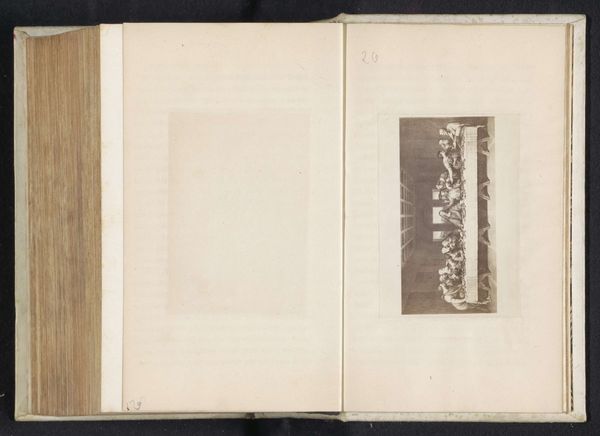
print, photography, albumen-print
#
ink paper printed
# print
#
landscape
#
photography
#
orientalism
#
albumen-print
Dimensions: height 136 mm, width 188 mm
Copyright: Rijks Museum: Open Domain
Editor: So this is a photograph titled “Gezicht op Sarkhej Roza bij Ahmedabad,” taken before 1866 by Thomas Biggs. It looks like it's from an old photo album, and the image is printed on a sepia-toned page. I'm struck by the sort of mirrored symmetry in the photograph. What symbolic readings can we give to an image like this? Curator: An interesting question! The photograph, framed like a jewel within the album page, certainly evokes a sense of deliberate construction, doesn’t it? Consider the Sarkhej Roza itself - it was once a significant Sufi center near Ahmedabad in India. Water features prominently in such sacred spaces, designed to physically mirror heaven and create harmony, order, and purification in an architectural format. But there is the artificial framing of orientalism at work too: what meaning could water, architecture, and order, mean within the cultural and political narratives of 19th century Europeans? Editor: That's fascinating. The water and mirrored symmetry become like symbolic gates between different worlds or states of mind, not just heaven and earth. It’s about different cultures encountering each other. Do you think Biggs would have been aware of this when composing the shot, or was it just accidental beauty? Curator: Awareness exists on many levels. He may or may not have been explicitly aware of every layer, but photography itself – and especially the act of capturing a distant place – always comes laden with a complex web of intentionality and cultural baggage, whether or not the image is beautiful or purely functional. I mean, what did beauty signify in such an enterprise? What emotional function does symmetry create? Editor: Right, so it becomes this potent symbol, whether Biggs intended it to be or not, speaking volumes about cultural memory, about the relationship between observer and observed. Curator: Precisely. It's a window into a moment, and also into the long, evolving narrative of cross-cultural exchange and perception.
Comments
No comments
Be the first to comment and join the conversation on the ultimate creative platform.
